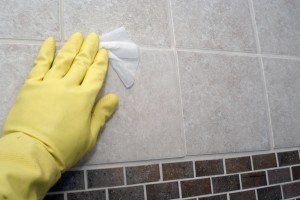Detecting Mold

The Kitchen
Some molds that prefer leaking or constantly damp water fixtures, such as alternaria, cause sinus inflammations, allergic reactions, or asthma attacks, and can be handled with proper equipment by a homeowner. Others, such as black mold, are much more dangerous and more difficult to eradicate as well. Checking under the sink for any moist or discolored areas is one of the most effective ways to prevent a kitchen-borne mold infestation from getting out of hand.
The Restroom
Pink molds, such as fusarium, grow in areas that frequently remain damp, whether they are porous or non-porous surfaces. While it is easily removed from surfaces such as porcelain and tile, fabrics and textiles are impossible to fully clean. Other porous surfaces, such as wooden window sills or frames, are just as impossible to sanitize, as even one or two surviving mold spores will grow until the problem has returned in force once again.
The Basement
A cellar or basement can become host to dangerously large mold colonies if the basement is unfinished and infrequently used, but even a fully finished basement is susceptible to developing moisture issues. Cladosporium takes the appearance of dry rot in wood, so carefully check all wood in the basement or crawlspace for a mottled or shiny appearance.
Mold Detected: What Comes Next
If you have uncovered a mold infestation after following these pointers, an environmental consulting service is your best bet for accurately identifying the strain and threat level. They will also provide a proper plan for the safe removal and handling of all contaminated materials. Contact H2 Environmental to schedule a consultation or ask any questions you may have about the mold detection and removal process.










